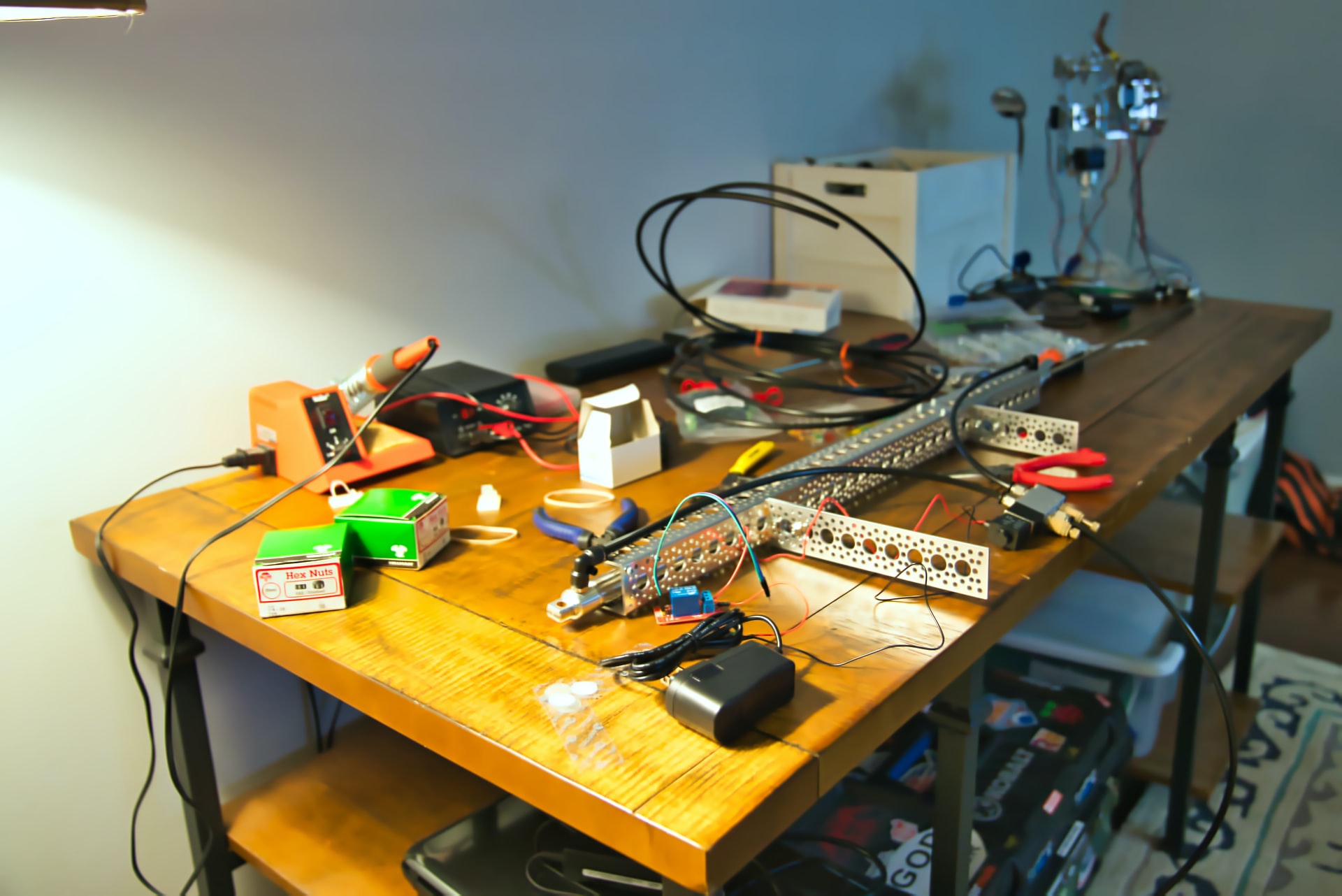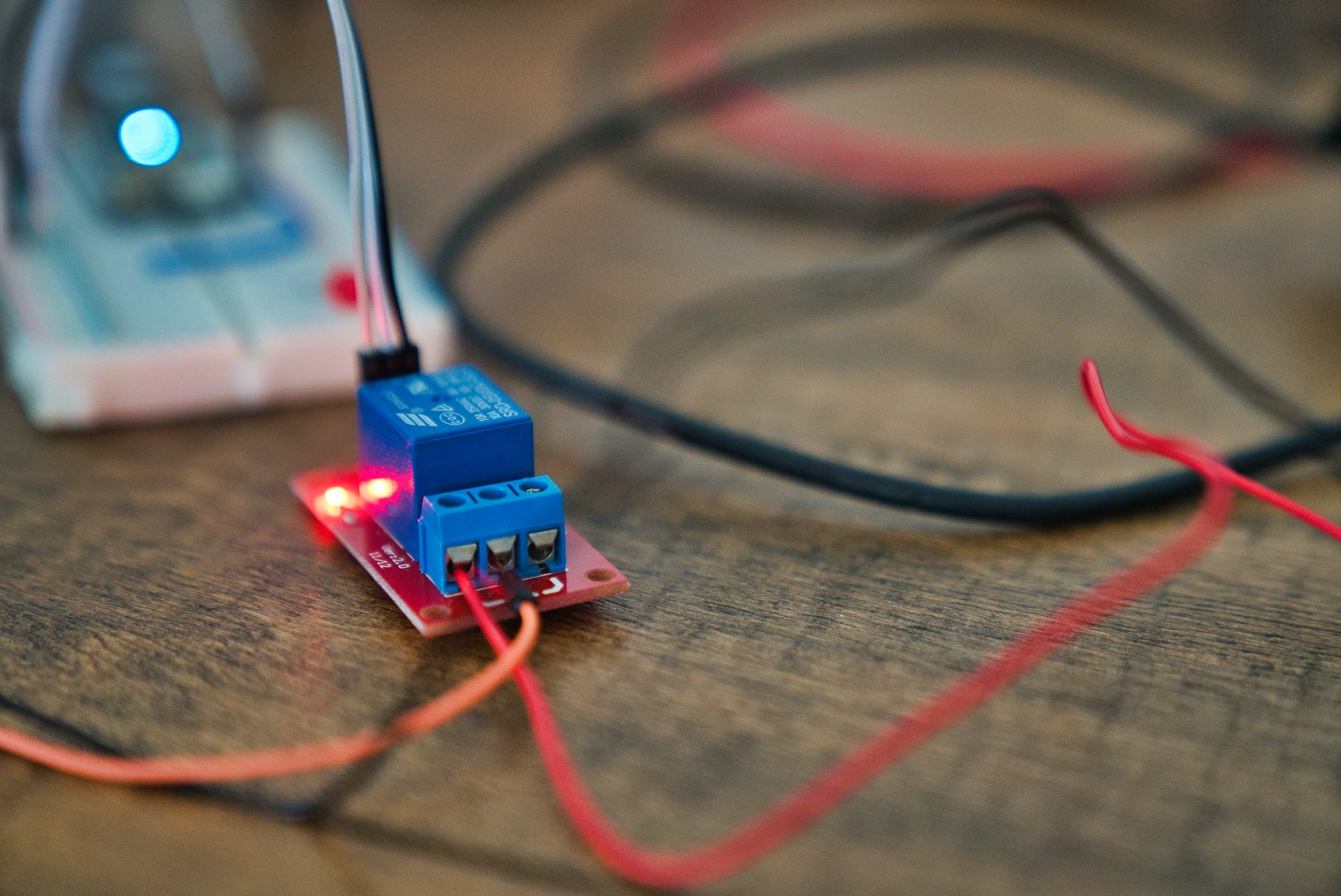
IoT Design: These are the principles you have to remember
Table of Contents
But the Internet of Things isn’t a vision from the future. The technology is already here, and we see many different applications of IoT in contexts such as healthcare, retail, transportation, and manufacturing. In addition, we will show you why IoT design is so important.
As the presence of IoT devices grows in our daily lives, it is clear that IoT is on its way to changing the fundamental aspects of how we interact with the world.
And that’s why UX design will play such a key role in the advancement of IoT. It doesn’t matter if it’s a healthcare or transportation company – everyone is constantly looking for new ideas to deliver better customer experiences, provide more value, and solve people’s problems.
Read this article to find out what IoT design is and what principles IoT implementations should follow to provide an excellent experience to users.
What is IoT design?
Before we move to the explanation of IoT design, let’s take a moment and reflect on what the Internet of Things itself is today.
What is IoT?
We can define the Internet of Things in many different ways. One way to describe IoT would be this:
IoT is a system of interrelated devices, machines, objects that are provided with unique identifiers and can transfer data over a network without the need of human to computer interaction.
It’s the connection to the internet that forms the core point of IoT. Connecting things to the internet is a great idea in general – just look at our smartphones, tablets, and laptops.
The Internet of Things as the concept is quite broad, and that’s why it might be difficult to nail it down when so many different use cases, examples, and opportunities are now part of identity. But in its essence, the Internet of Things is about connecting all the different things that surround us to the internet.

internet of things, table with electronics
Why does IoT matter?
What do we really mean when we say that something is connected to the internet? It basically means that the device can send or receive information (or both). That ability is what makes things smart.
Just take a look at your smartphone as an example. You can use it to listen to any song in the world. But you can do that not because you have all of them stored in your phone. It’s because these songs are stored somewhere else, and your phone can send information (asking for a song) and receive information (streaming the song on your phone).
IoT devices work similarly, and that’s why they carry so many implications for how we communicate, build customer experiences, and do business in general.
In general, within the Internet of Things paradigm we find objects belonging to three categories:
- Things that collect information and then send it to a particular place,
- Things that receive information and then act upon that input,
- Things that can both collect, send, and act on information that they have received.
So what does IoT design mean?
As you can see, the Internet of Things brings about a range of entirely new experiences. All of these experiences will require new modes of interaction. And those will have to be designed carefully.
For example, the rise of IoT devices means that gestures and physical body motion will become a new and far more natural way of interacting with the digital world that surrounds us.
The IoT space is now a great topic of exploration for designers who investigate the potential human-machine interaction models. They ask themselves questions about unlocking the value of these interactions through design.
IoT design means that the focus is on singular experiences and no longer but about design principles that represent a broader ecosystem within which IoT devices function.
Why is IoT design important?
Designing an IoT solution comes with a set of totally new design challenges. Consider that IoT systems usually consist of multiple elements such as physical device sensors, actuators, and interactive devices, the network that connects these devices, as well as the data gathered and then analyzed to create a meaningful experience.
Finally, we’re also dealing with the physical context in which the user actually interacts with the solution. For example, for smart home devices, it can be your kitchen.
That’s why IoT implementations require various types of design – from industrial product design to service and business design. All of these factors impact the total user experience on the IoT system.
That’s why designing in this context is sometimes quite challenging. To make your life easier, here are the most important IoT design principles that come from years acquired in experience designing for IoT and other industry best practices.
6 principles of IoT design
1. Do your research
When designing IoT-enabled products, designers might make the mistake of forgetting why customers value these products in the first place. That’s why it’s a good idea to think about the value an IoT offering should deliver at the initial phase of your design.
When getting into IoT design, you’re not building products anymore. You’re building services and experiences that improve people’s lives. That’s why in-depth qualitative research is the key to figuring out how you can do that.
Assume the perspective of your customers to understand what they need and how your IoT implementation can solve their pain points. Research your target audience deeply to see what their existing experiences are and what they wish was different about them.
2. Concentrate on value
Early adopters are eager to try out new technologies. But the rest of your customer base might be reluctant to put a new solution to use. They may not feel confident with it and are likely to be cautious about using it.
If you want your IoT solution to become widely adopted, you need to focus on the actual tangible value it’s going to deliver to your target audience.
What is the real end-user value of your solution? What might be the barriers to adopting new technology? How can your solution address them specifically?
Note that the features the early tech adopters might find valuable might turn out to be completely uninteresting for the majority of users. That’s why you need to carefully plan which features to include and in what order, always concentrating on the actual value they provide.
3. Don’t forget about the bigger picture
One characteristic trait of IoT solutions is that they typically include multiple devices that come with different capabilities and consist of both digital and physical touchpoints. Your solution might also be delivered to users in cooperation with service providers.
That’s why it’s not enough to design a single touchpoint well. Instead, you need to take the bigger picture into account and treat your IoT system holistically.
Delineate the role of every device and service. Develop a conceptual model of how users will perceive and understand the system. All the parts of your system need to work seamlessly together. Only then you’ll be able to create a meaningful experience for your end-users.
4. Remember about the security
Don’t forget that IoT solutions aren’t purely digital. They’re located in the real-world context, and the consequences of their actions might be serious if something goes wrong. At the same time, building trust in IoT solutions should be one of your main design drivers.
Make sure that every interaction with your product builds consumer trust rather than breaking it. In practice, it means that you should understand all the possible error situations that may be related to the context of its use. Then try to design your product in a way to prevent them. If error situations occur, make sure that the user is informed appropriately and provided with help.
Also, consider data security and privacy as a key aspect of your implementation. Users need to feel that their data is safe, and objects located in their workspaces or home can’t be hacked. That’s why quality assurance and testing the system in the real-world context are so important.
5. Build with the context in mind
And speaking of context, it pays to remember that IoT solutions are located at the intersection of the physical and digital world. The commands you give through digital interfaces produce real-world effects. Unlike digital commands, these actions may not be easily undone.
In a real-world context, many unexpected things may happen. That’s why you need to make sure that the design of your solution enables users to feel safe and in control at all times.
The context itself is a crucial consideration during IoT design. Depending on the physical context of your solution, you might have different goals in mind. For example, you might want to minimize user distraction or design devices that will be resistant to the changing weather conditions.
The social context is an important factor, as well. Don’t forget that the devices you design for workspaces or homes will be used by multiple users.
6. Make good use of prototypes
IoT solutions are often difficult to upgrade. Once the user places the connected object somewhere, it might be hard to replace it with a new version – especially if the user would have to pay for the upgrade.
Even the software within the object might be hard to update because of security and privacy reasons. Make sure that your design practices help to avoid costly hardware iterations. Get your solution right from the start. From the design perspective, it means that prototyping and rapid iteration will become critical in the early stages of the project.
Read also: Internet of Things – Everything you need to know about IoT

internet of things, piece of electronics
Examples of great IoT design
DHL’s IoT-powered tracking and monitoring system